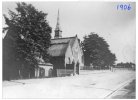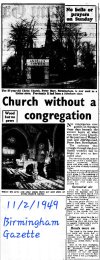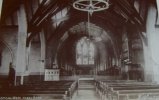S
-
Welcome to this forum . We are a worldwide group with a common interest in Birmingham and its history. While here, please follow a few simple rules. We ask that you respect other members, thank those who have helped you and please keep your contributions on-topic with the thread.
We do hope you enjoy your visit. BHF Admin Team
You are using an out of date browser. It may not display this or other websites correctly.
You should upgrade or use an alternative browser.
You should upgrade or use an alternative browser.
Christ Church Perry Barr
- Thread starter Ian FOFB
- Start date
Eric Gibson
master brummie
That 1939 piece saying the corporation had acquired the church for road widening surprised me, I recall the place being there as shown in the other photos right up to at least the fifties and I bought timber from there when it was Ansell's Timber for my first house which I bought in 1956.
They must have dragged their feet with that scheme.
They must have dragged their feet with that scheme.
Banjo
master brummie

Christ Church, Perry Barr. When I was at Gower St School 1960-61 we used the Holford Drive playing fields for our sports lessons. On the journey there, the school bus used to go round the back of this building to get on the Aldridge Rd. It was virtually a traffic Island (which sold wood). I can't help but think that the 'now' photo looks more desolate and community deprived. We are used to this scene today but, I'm sure those people standing at the church gate would be horrified to see what their part of the world has now become. Don't get me wrong, I'm not anti-progress, just a little nostalgic.
Eric Gibson
master brummie
That's how I remember it, Ansells Timber, it was the first time I'd seen a church disused and then used as business premises.
Like the pubs they're all going that way now but I think most people will miss the pubs more than the church.
Like the pubs they're all going that way now but I think most people will miss the pubs more than the church.
This seems to suggest that Christ Church was still in use as a mission church up to 1939, where other sources, e.g.Victoria History of County of Warwick, Volume VII, suggest its license for public workshop expired in 1926.
Last edited:
Eric Gibson
master brummie
I don't know what it was used for after 39 but do recall it becoming Ansell's Timber in the fifties
Strangely British History Online only lists it as a mission under St John the Evangelist Church (Perry Village). It isn’t listed in its own right. British History Online says: The following missions were licensed for public worship: Christ Church, Perry Barr, 1866-1926, erected 1862, enlarged 1877. Presumably 1926 is the year it closed as a mission church, thereafter becoming different non-religious concerns. Viv.
Pedrocut
Master Barmmie
This comes from 1949, three years after Ansells took over as timber merchant. Before that it was a furniture depository, and further back children played in the empty building.
The Christ Church Hall was used by St Johns in 1935 for a concert given to the elderly, so it may be that it was not used for religious services from 1926 but Hall still utilised. The War would the throw things up in the air.

The Christ Church Hall was used by St Johns in 1935 for a concert given to the elderly, so it may be that it was not used for religious services from 1926 but Hall still utilised. The War would the throw things up in the air.
Eric Gibson
master brummie
That's how I remember Perry Bar station, we used to go to Stratford on Avon from there. 
In this postcard view of the London & North Western Perry Barr railway station, the spire of Christ Church shows above the trees. This particular area has changed many times over the years and is presently changing again.
View attachment 152631
if only it looked like that now..great photo
Google Maps
Find local businesses, view maps and get driving directions in Google Maps.
 www.google.com
www.google.com
oldMohawk
gone but not forgotten
The one journey I made from Perry Barr station was to Hednesford. It was with our scout troop for a week's camping at Beaudesert on Cannock Chase. We took a hand cart with us to carry our kit on the long walk from Hednesford to the campsite. We had pushed the cart along the Aldridge Road to Perry Barr and had to dismantle it so we could carry it down the stairs at the station and load it on the train ... happy days ...That's how I remember Perry Bar station, we used to go to Stratford on Avon from there.
This Plevins designed church was built in 1861 and was generously subscribed to by the Calthorpe family. It was built to meet the demand for increased accommodation at the Birchfield end of the parish.
Early on it was described as a modest structure and was really only a school church. To meet an increasing congregation an extra wing was soon added to the superstructure and the school room was enlarged. Even these improvements proved inadequate, and by 1877 a south wing was added and the schoolrooms were further enlarged.

The press cutting below illustrates the sad position reached by the mid-20th century.

Source: British Newspaper Archive
Early on it was described as a modest structure and was really only a school church. To meet an increasing congregation an extra wing was soon added to the superstructure and the school room was enlarged. Even these improvements proved inadequate, and by 1877 a south wing was added and the schoolrooms were further enlarged.

The press cutting below illustrates the sad position reached by the mid-20th century.

Source: British Newspaper Archive
Yes, it is, but predictable I suppose given the decline in attendances post-war. Changes in the road system at that junction must have been the final blow. It was a sister church to St Johns, so possibly another influencing factor as its numbers were in decline. I expect its remaining churchgoers could relatively easily attend St Johns instead.



